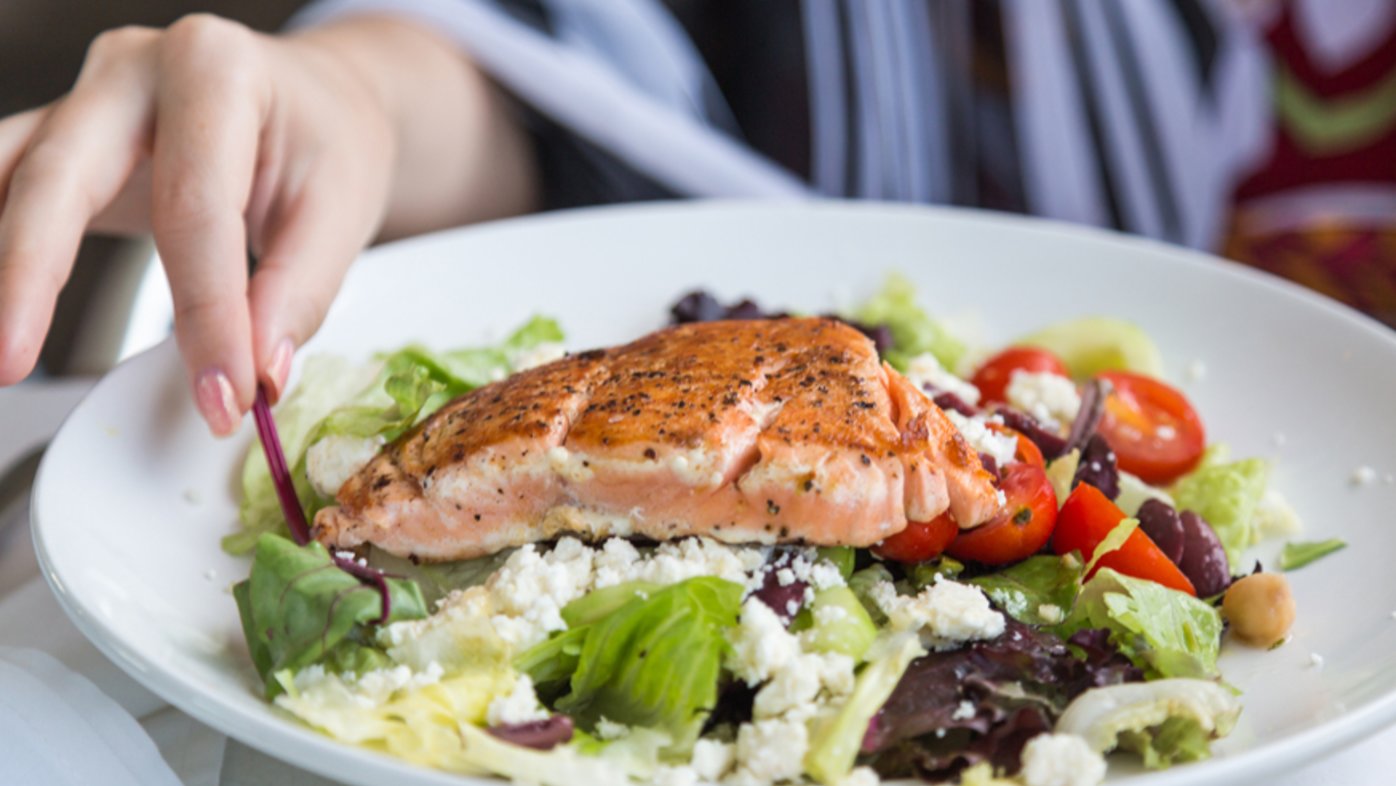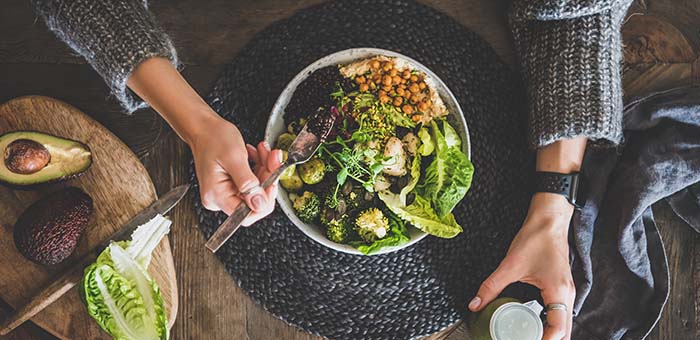
What do vegans eat? They don't eat animal flesh or any by-products. This means they do not eat meat, poultry, or fish. Vegans are not only avoiding animal flesh but also avoid certain foods. For example, carmine is produced by cochineal insects and used to make many food products. If you're wondering what a vegan diet looks like, read on.
Vegetables
A vegan diet is not a diet of all salads. Instead of dressing up a plate of vegetables with tomato sauce and a grilled cheese sandwich, vegans eat a variety of different vegetables and fruits instead of meat. This diet also replaces beef and cow's cheese with soymilk. A vegan diet is safe as long it comes from plant-based sources.

Soymilk
Vegans might be a little skeptical about soymilk. However, this milk is not necessarily unhealthful. It is rich in calcium and other vital vitamins. There are also flavored varieties available. Alpro Soya unsweetened is a great choice for vegans and vegetarians. It contains 120mg calcium per 100ml. 0.38 mg vitamin A12.
Beans
Why should Vegans eat beans Beans are rich in protein, fiber and antioxidants. Peanut butter, seitan and quinoa are great sources of protein. However, beans are a rich source of fiber which helps cleanse the body. Baked beans, for example, are another delicious way to enjoy beans. This article will explain why beans are so important to the vegan diet.
Seitan
Seitan is an excellent meat substitute. Seitan is an excellent vegan option because it tastes just like meat. Seitan has a low level of free radicals. This is great news for vegans looking to increase their protein intake. While many of us are aware that gluten is bad for us, seitan contains no gluten and is perfectly safe to eat.
Pop-Tarts
Pop-Tarts are often misunderstood. While vegan versions do not contain any dairy or gelatin they still contain some animal parts. It is best to stay away from unfrosted Pop-Tarts, if possible. Sweet blueberry flavour is used in unfrosted Pop-Tarts, which are made with pastry and not dairy. Unfrosted Pop Tarts can have more sugar than regular, but they're still vegan.

Fermented foods
There are many advantages to fermented food. Because they are high in enzymes and beneficial bacteria, these foods help digestion. The food's bacteria increases vitamin and omega-3 content. Furthermore, the fermentation process destroys anti-nutrients, which inhibit the absorption of essential nutrients. Fermented products, for example, will also break down phytic Acid, which binds minerals to inhibit their absorption.
FAQ
Is cold a sign of a weak immune response?
Being cold gives you a weaker immune system because when you are cold, your body produces less white blood cells which fight infections. However, being cold also makes you feel better because your body releases endorphins into your brain which reduce pain.
What is the difference between a calorie or a kilocalorie.
Calories are units used to measure the amount of energy in food. The unit of measurement is called a calorie. One calorie is the amount of energy required to heat one gram water one degree Celsius.
Kilocalories can also be used to refer to calories. Kilocalories are measured as a thousandth of a calorie. 1000 calories, for example, equals one kilocalorie.
What is the difference of a virus from a bacteria?
A virus can be described as a microscopic organism incapable of reproducing outside its host cell. A bacterium (or single-celled organism) reproduces by splitting itself into two. Viruses can be as small as 20 nanometers, while bacteria can grow up to 1 micron.
Viruses are usually spread through contact with infected bodily fluids, including saliva, urine, semen, vaginal secretions, pus, and feces. Bacteria are often spread via direct contact with contaminated surfaces and objects.
Viral infections can also be introduced to our bodies by a variety of cuts, scrapes or bites. They can also be transmitted through the eyes, nose, mouth, ears, vaginal, rectum, and anus.
Bacteria can enter our bodies through wounds, cuts, scrapes, burns, insect stings, or other breaks in our skin. They may also come into our bodies through food, water, air, soil, dust, or animals.
Both bacteria and viruses can cause illness. Viruses cannot multiply in their host cells. They can only infect living cells and cause illness.
Bacteria can grow in their hosts and cause disease. They can infiltrate other parts of the body. They can even invade other parts of the body, which is why antibiotics are necessary to eradicate them.
What is the best diet for me?
Your lifestyle and individual needs will determine the best diet for your body. Consider how much energy and low-calorie foods you consume, as well as whether or not you are a fan of fruits and vegetables.
Intermittent Fasting is an alternative to traditional fasting if you are looking to lose weight. Intermittent fasting is a way to eat only certain meals during the day instead of three large meals. This method may work better than traditional diets which include daily calorie counts.
Intermittent fasting has been shown to improve insulin sensitivity, reduce inflammation and lower the risk of developing diabetes. Other studies suggest that intermittent fasting could promote fat reduction and improve overall body structure.
What is the ideal weight for my height? BMI calculator & chart
Use a BMI calculator to determine how much weight is needed to lose. A healthy BMI range should be between 18.5- 24.9. You should lose about 10 pounds each month if you are trying to lose weight. Enter your height and weight to calculate your BMI.
Check out this BMI chart to determine if you are overweight or obese.
Do I need calories to count?
You may be wondering "what is the best diet for you?" or "is counting calories necessary?" The answer is dependent on many factors like your current state of health, your personal goals, how you prefer to eat, and your overall lifestyle.
Which one is right for you?
The best diet depends on me, my health, my goals, my lifestyle, and my preferences. There are many good and bad diets. Some work well for certain people while others don't. What should I do then? How can I make the right choice?
These are the questions that this article attempts to answer. It begins with an overview of the different diets today. After that, you will learn about the pros and disadvantages of each type. We'll then discuss how to choose which one is best for you.
To begin, let's take a quick look at the different types of diets.
Diet Types
There are three main types of diets: low fat, high protein, and ketogenic. Let's talk about them briefly.
Low Fat Diets
A low-fat diet is one that limits the intake of fats. This is accomplished by decreasing the intake of saturated fats like butter, cream cheese, and other dairy products. These fats can be replaced with unsaturated fats like avocados and olive oil. A low fat diet is often recommended for those who want to lose weight quickly and easily. This diet can cause constipation, heartburn, and stomach problems. A person may also experience vitamin deficiencies if they don't get enough vitamins.
High Protein Diets
High protein diets reduce carbohydrates to favor of proteins. These diets are more protein-rich than others. They are meant to help build muscle mass and burn more calories. Unfortunately, they can't provide adequate nutrition for those who eat regularly. They can be quite restrictive and are not recommended for everyone.
Ketogenic Diets
The keto diet is also known as the keto diet. They are high in fat and moderate in protein and carbs. They are commonly used by athletes and bodybuilders as they allow them to train harder, longer and without feeling fatigued. You must adhere to all side effects such nausea, headaches, fatigue.
Statistics
- nutrients.[17]X Research sourceWhole grains to try include: 100% whole wheat pasta and bread, brown rice, whole grain oats, farro, millet, quinoa, and barley. (wikihow.com)
- According to the Physical Activity Guidelines for Americans, we should strive for at least 150 minutes of moderate intensity activity each week (54Trusted Source Smoking, harmful use of drugs, and alcohol abuse can all seriously negatively affect your health. (healthline.com)
- This article received 11 testimonials and 86% of readers who voted found it helpful, earning it our reader-approved status. (wikihow.com)
- WHO recommends reducing saturated fats to less than 10% of total energy intake; reducing trans-fats to less than 1% of total energy intake; and replacing both saturated fats and trans-fats to unsaturated fats. (who.int)
External Links
How To
How to stay motivated to exercise and eat healthily
Staying healthy is possible with these motivation tips
Motivational Tips for Staying Healthy
-
Create a list of your goals
-
Set realistic goals
-
Be consistent
-
Reward yourself when your goal is achieved
-
If you fail the first time, don't lose heart
-
Have fun